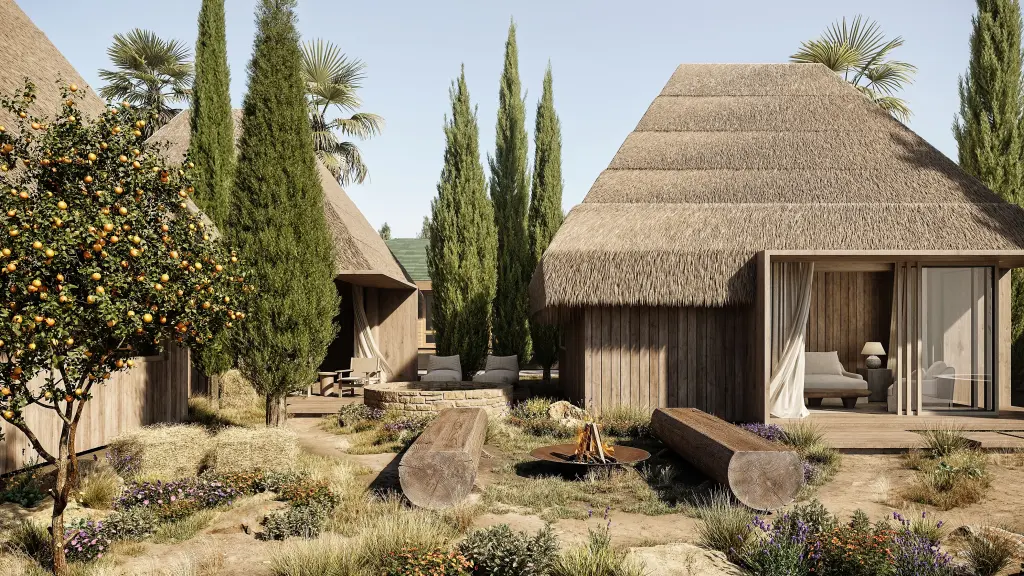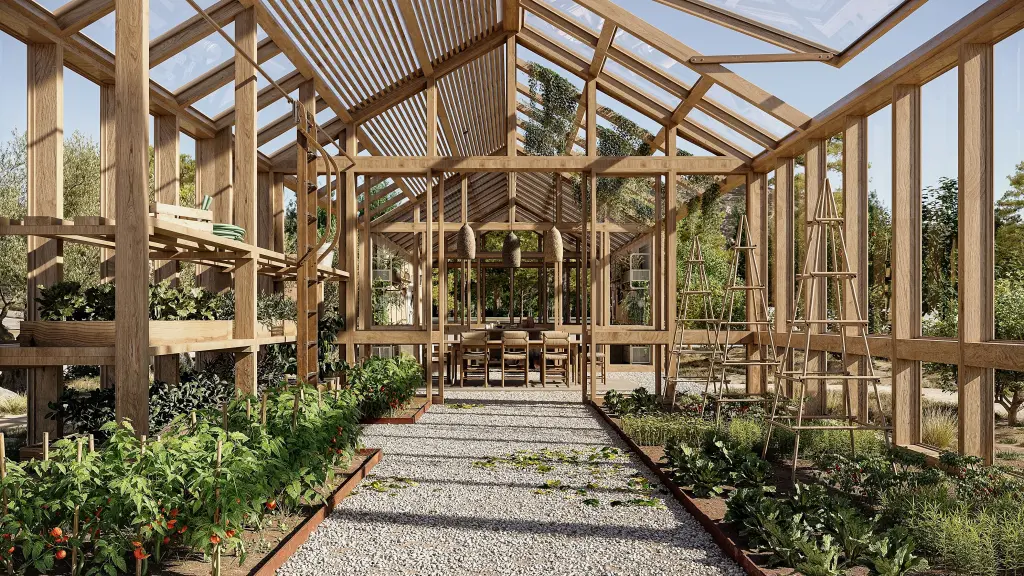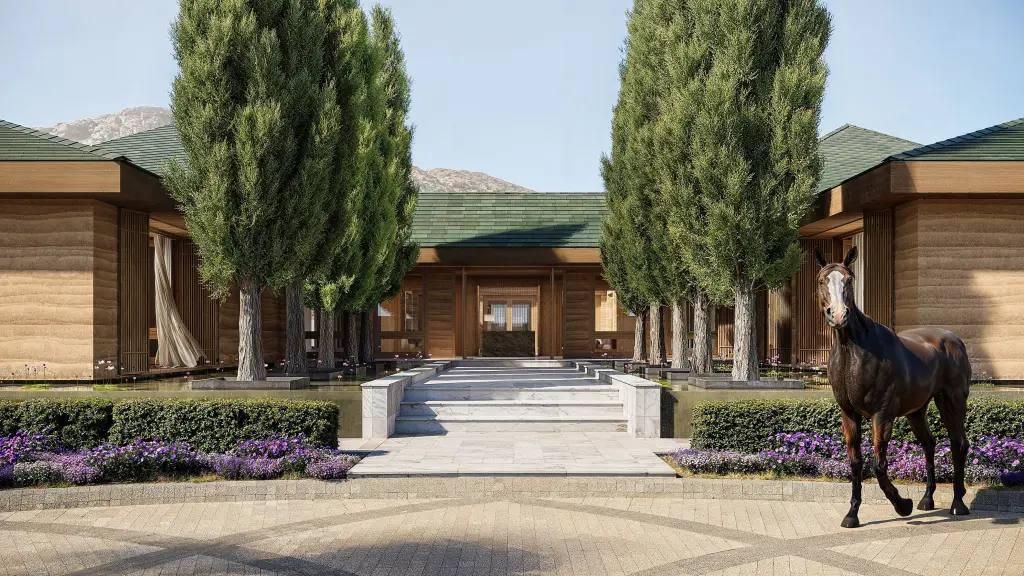MOORICH
Function|Agrofarm Boutique Hotel
Location|Taif, Saudi Arabia
Type|Villas & Resorts
Client|Private
Size|Plot Area: 6,600.00 sqm - Built Area: 1,500.00 sqm
Stage|Final Design
Masterplan|KAAF I Kitriniaris Associates Architecture Firm
Architectural Design|KAAF I Kitriniaris Associates Architecture Firm
Team|Alexandros Kitriniaris, Katerina Lampri
Description
The project involves the transformation of an existing country villa into a high-end multifunctional agrofarm boutique resort, located at a 6,672.99 sq.m. plot within the mountainous region of Taif, in Saudi Arabia. The villa spans approximately 1,100 sq.m., while the complex also includes five 200 sq.m. bungalows, a greenhouse, a gym, a farm and auxiliary spaces. More specifically, the hotel consists of the following:
- Existing villa shell (1,108 sq.m.), housing 14 suites with shared and auxiliary space
- Five bungalows (36 sq.m. each), located to the northeast, each containing a kitchen, a living room and a bedroom
- Gym and yoga area (113.47 sq.m.
- Greenhouse located to the southwest, incorporating both closed and open spaces
- Housekeeping building (37.93 sq.m.)
- Farm (250 sq.m.) in the northern part, at a lower elevation.
- Existing villa shell (1,108 sq.m.), housing 14 suites with shared and auxiliary space
- Five bungalows (36 sq.m. each), located to the northeast, each containing a kitchen, a living room and a bedroom
- Gym and yoga area (113.47 sq.m.
- Greenhouse located to the southwest, incorporating both closed and open spaces
- Housekeeping building (37.93 sq.m.)
- Farm (250 sq.m.) in the northern part, at a lower elevation.
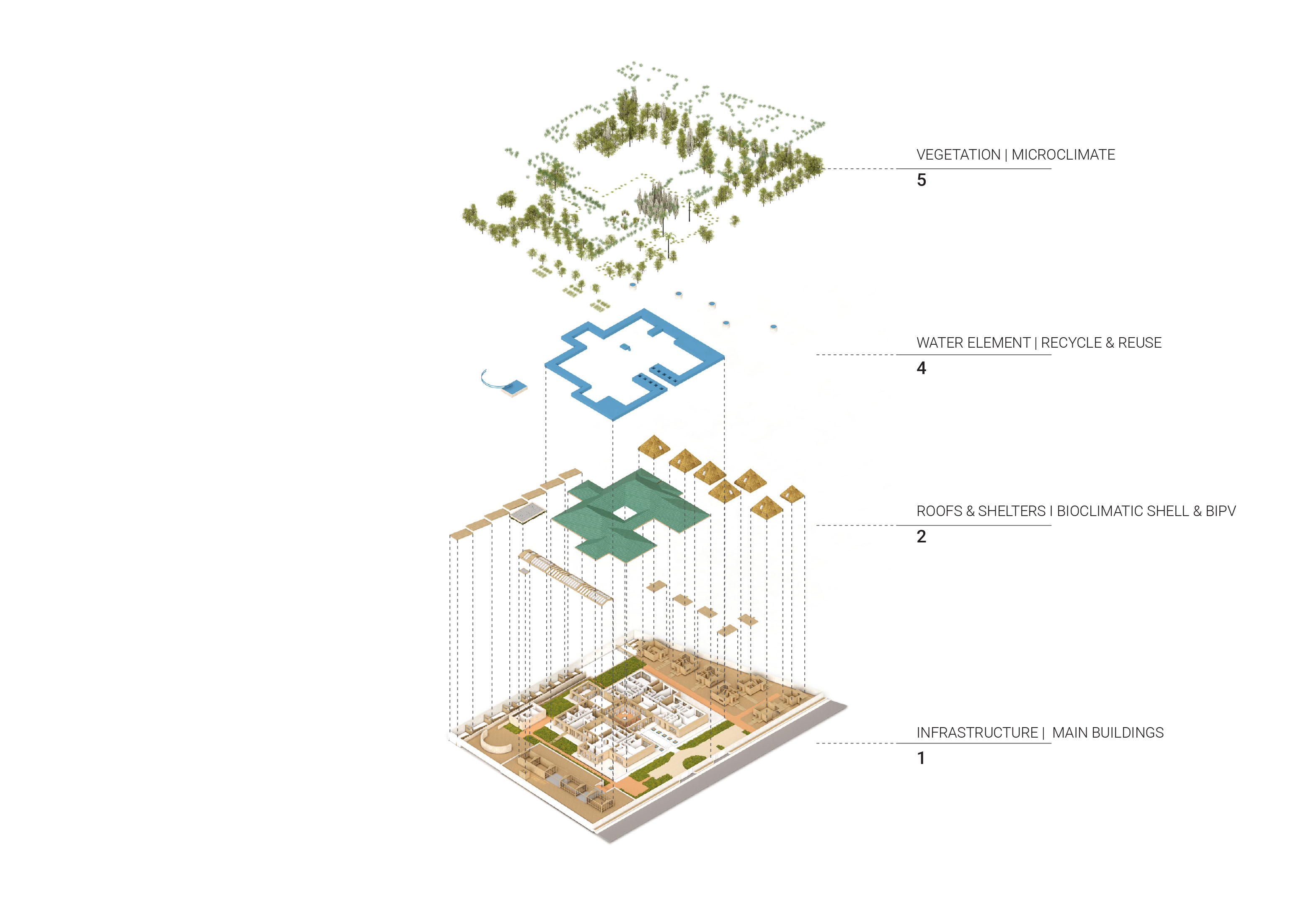
The architectural design aims to preserve the Moorish elements of the Islamic Architecture, mainly expressed in this project through spatial structures rather than decorative patterns. In this direction, the new design of the bungalows, the supplementary spaces and the gardens is intricately connected to the visitor’s journey through nature. The overall design approach is characterized by symmetry, harmony, small scale, varied plant species and water features, all of which are emblematic of the Moorish landscape architecture. The purpose of the new constructions is not to replicate or imitate ancient models, but to adapt the principles of the Moorish architecture to contemporary human needs, such as breathing in fresh air, resting in the shade, enjoying a beautiful environment and view, listening to pleasant sounds and experiencing spatial isolation for tranquility and meditation—timeless human needs historically addressed by the Moorish Landscape Architecture. This is achieved both in the buildings, by using natural materials in all infrastructures (existing and new) and in the design of the surrounding areas. The element of water is predominant, placed synthetically around the existing villa so that, beyond reflecting the building's structure and the cypress-lined alley, it also influences the microclimate by providing natural cooling and auditory well-being, which is created through the perimeter overflow when visitors enter the villa. Reminiscent of the Moorish architecture influenced by Islamic traditions, the shallow water surface surrounding the villa is constructed in a dark tone, and by reflecting the entire building, it creates a visual inertia that also imparts a sense of infinity, highlighting the villa with the central atrium as the focal point of the architectural composition.
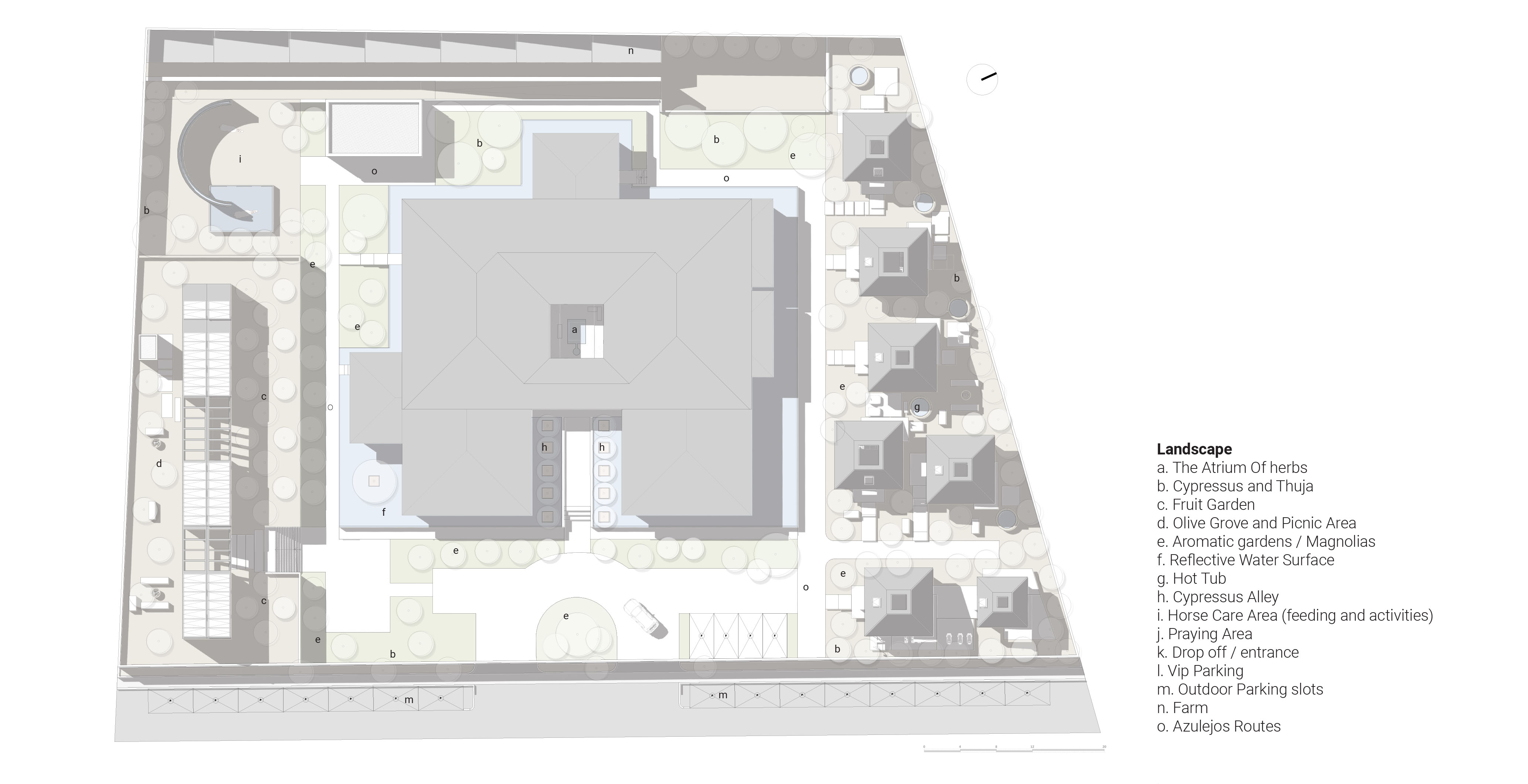
Access to the resort is via a semi-circular car arrival area, flanked by a VIP parking lot with four spaces to the northeast and a prayer area to the southwest. The alley of towering cypress trees marks the entrance to the main villa. Specifically, a bioclimatic shell made of rammed earth is added to the existing villa structure, enhancing its thermal mass to maintain a consistently cool interior temperature. This shell also interacts with the natural materials used in the new buildings. Inside the villa, a complete renovation has been carried-out, preserving much of the existing structure while creating 14 suites in three typologies: Junior Suites, Suites and Grand Suites. The villa also features a reception area, a large and a medium-sized living room in separate spaces, a library, a dining area/breakfast room, bathrooms and the central atrium with a fountain and planters with herbs. Additionally, there is a preparation kitchen and all necessary auxiliary spaces—storerooms. Smaller central spaces inside and in all wings of the rooms contain areas where bed linens are stored for immediate housekeeping services.
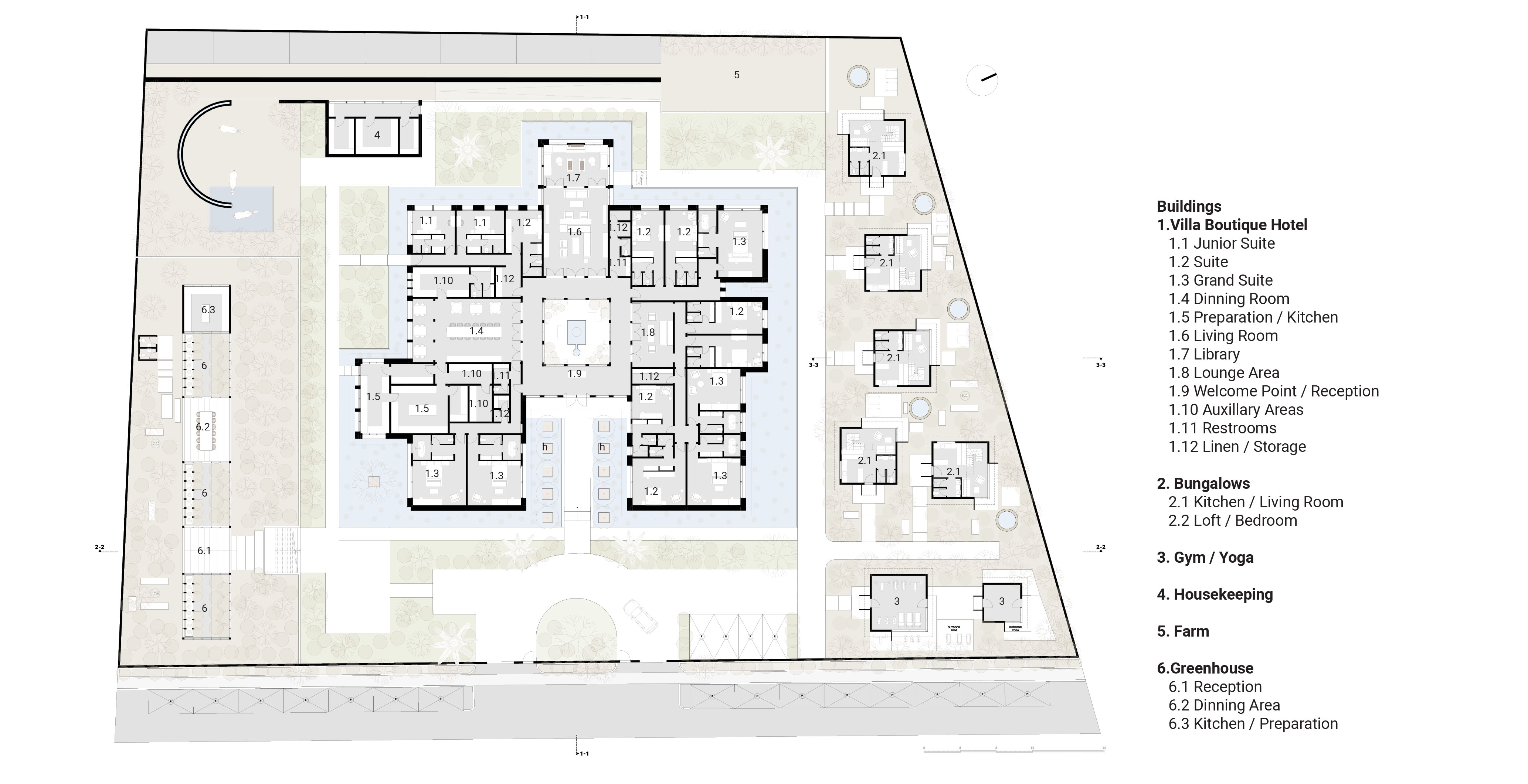
On the northeast, five new bungalow constructions have been planned, each one boasting a private garden and a hot tub. These are wooden structures with thatched roofs and square skylights on the upper side, allowing the natural light to penetrate the two-story interior. Each dwelling consists of a kitchen, a living room, a bathroom and a bedroom located in the loft. All bungalows are nestled within dense vegetation, ensuring privacy and offering the sensation of luxurious living in nature. On the west, the orchard and olive grove areas lie at a higher elevation, along with outdoor picnic seatings. Between them, in a linear configuration, a wooden structure with a pitched roof and skylights is developed, accommodating the greenhouse, which comprises both open and closed sections. Specifically, this area contains a reception space, enclosed sections for growing vegetables and other crops, a small preparation area and an outdoor dining space amidst the greenery. On the northwest, an open area has been designed for the care and feeding of horses, with a semi-circular shape delineating the space and a rectangular water surface. Next to it, an existing building has been preserved to host the central laundry and linen storage area, including washers, dryers and ironing stations. This building will be clad in stone, being the visual continuation of the outdoor horse care areas. Further down, via a ramp to a lower level, the farm area is reached, where a stable for horses is located, alongside a second linear building for domestic animals and poultry.
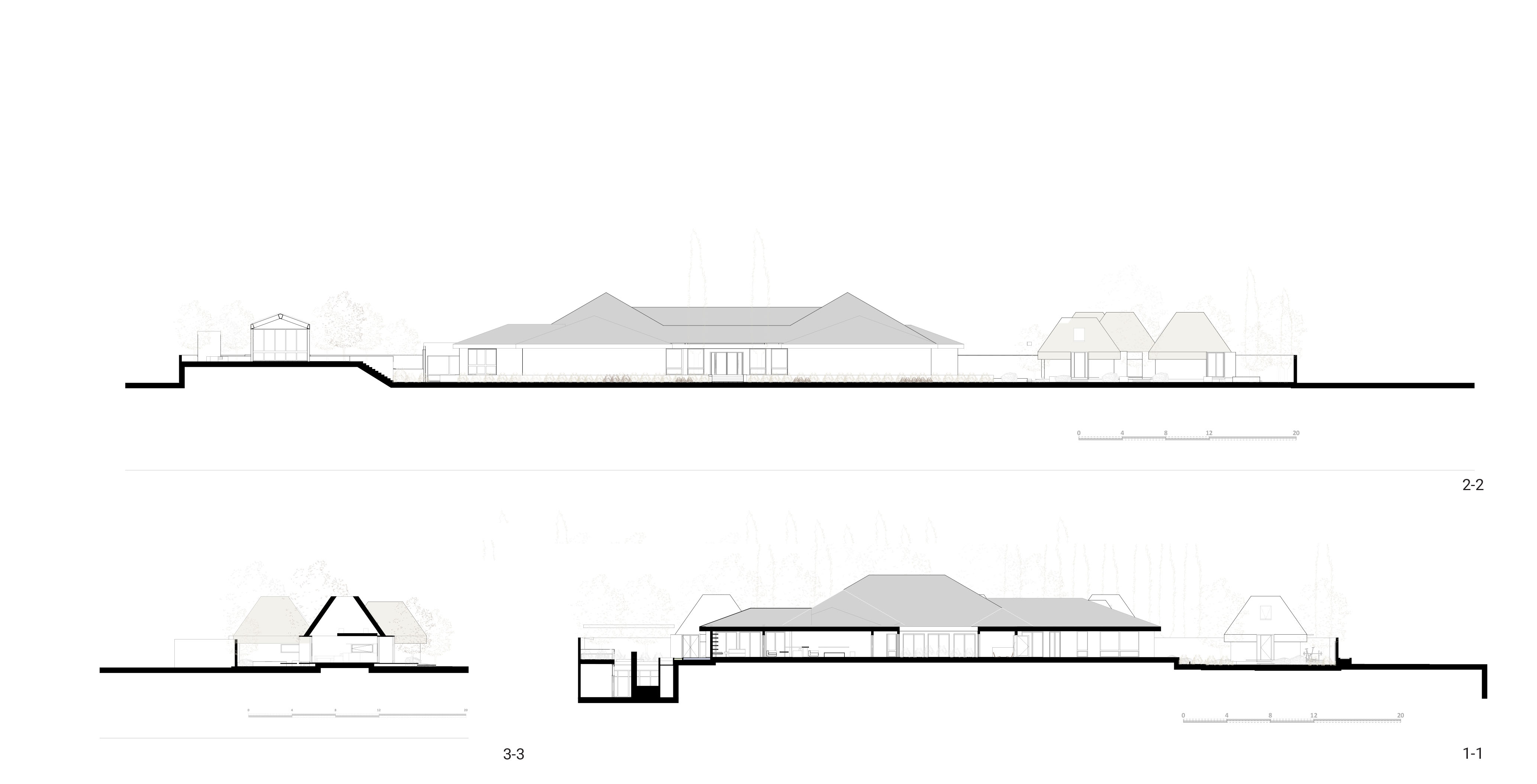
All secondary paths and walkways surrounding the villa are paved with colorful tiles (azulejos), maintaining the honeycomb pattern characteristic of the Muslim era, a feature found in contemporary gardens, showcasing an Arabic influence. The surrounding gardens of the villa consist of aromatic and ornamental plants and herbs. The perimeter fence encircling the plot is made up of dense trimmed vegetation of cypress and thuja trees, serving both as a visual and an acoustic boundary.
